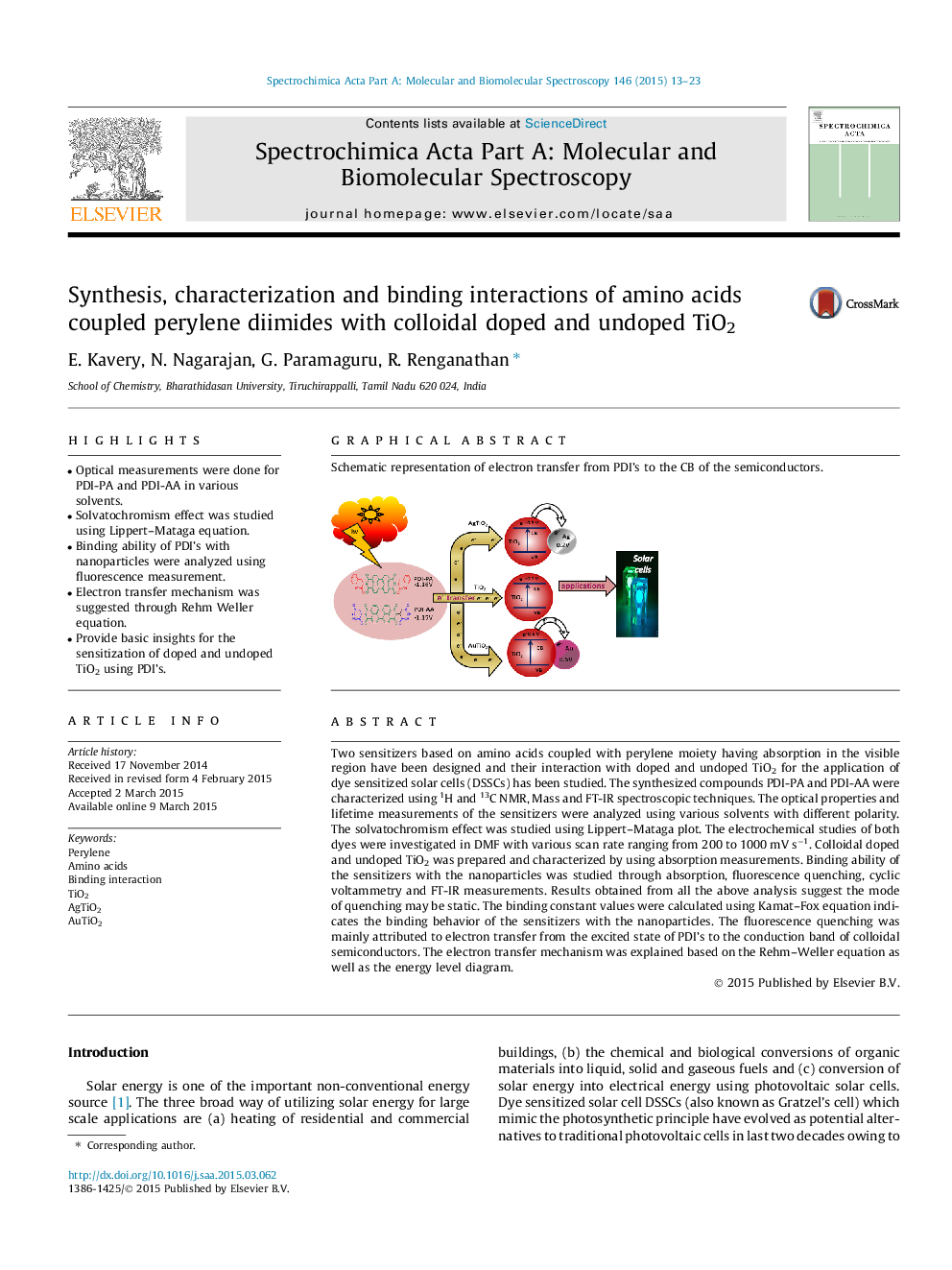| کد مقاله | کد نشریه | سال انتشار | مقاله انگلیسی | نسخه تمام متن |
|---|---|---|---|---|
| 1231896 | 1495223 | 2015 | 11 صفحه PDF | دانلود رایگان |

• Optical measurements were done for PDI-PA and PDI-AA in various solvents.
• Solvatochromism effect was studied using Lippert–Mataga equation.
• Binding ability of PDI’s with nanoparticles were analyzed using fluorescence measurement.
• Electron transfer mechanism was suggested through Rehm Weller equation.
• Provide basic insights for the sensitization of doped and undoped TiO2 using PDI’s.
Two sensitizers based on amino acids coupled with perylene moiety having absorption in the visible region have been designed and their interaction with doped and undoped TiO2 for the application of dye sensitized solar cells (DSSCs) has been studied. The synthesized compounds PDI-PA and PDI-AA were characterized using 1H and 13C NMR, Mass and FT-IR spectroscopic techniques. The optical properties and lifetime measurements of the sensitizers were analyzed using various solvents with different polarity. The solvatochromism effect was studied using Lippert–Mataga plot. The electrochemical studies of both dyes were investigated in DMF with various scan rate ranging from 200 to 1000 mV s−1. Colloidal doped and undoped TiO2 was prepared and characterized by using absorption measurements. Binding ability of the sensitizers with the nanoparticles was studied through absorption, fluorescence quenching, cyclic voltammetry and FT-IR measurements. Results obtained from all the above analysis suggest the mode of quenching may be static. The binding constant values were calculated using Kamat–Fox equation indicates the binding behavior of the sensitizers with the nanoparticles. The fluorescence quenching was mainly attributed to electron transfer from the excited state of PDI’s to the conduction band of colloidal semiconductors. The electron transfer mechanism was explained based on the Rehm–Weller equation as well as the energy level diagram.
Schematic representation of electron transfer from PDI’s to the CB of the semiconductors.Figure optionsDownload as PowerPoint slide
Journal: Spectrochimica Acta Part A: Molecular and Biomolecular Spectroscopy - Volume 146, 5 July 2015, Pages 13–23